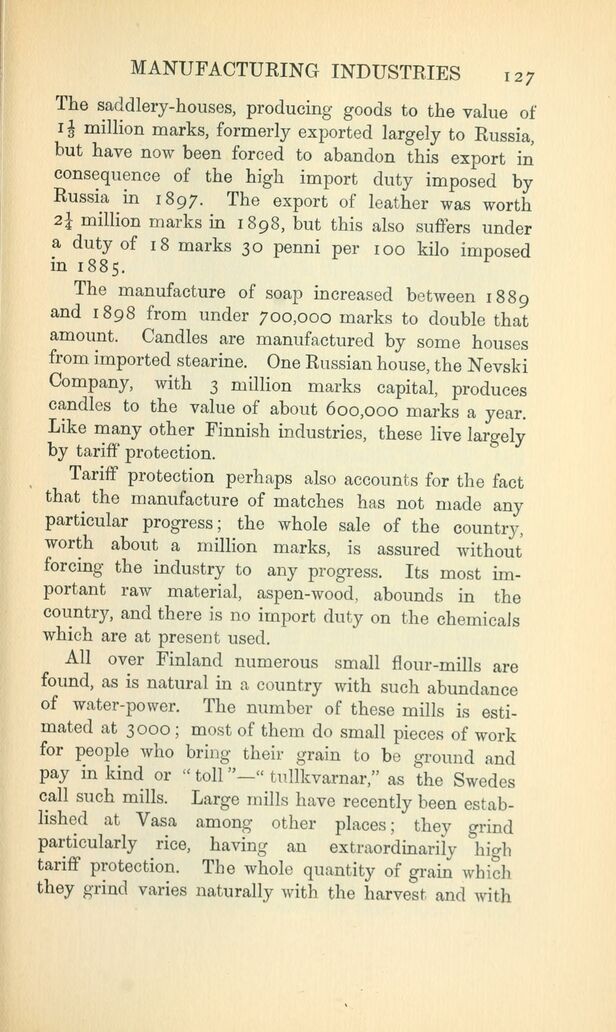
Full resolution (JPEG) - On this page / på denna sida - VI. Mining and Manufacturing Industries

<< prev. page << föreg. sida << >> nästa sida >> next page >>
Below is the raw OCR text
from the above scanned image.
Do you see an error? Proofread the page now!
Här nedan syns maskintolkade texten från faksimilbilden ovan.
Ser du något fel? Korrekturläs sidan nu!
This page has been proofread at least once.
(diff)
(history)
Denna sida har korrekturlästs minst en gång.
(skillnad)
(historik)
The saddlery-houses, producing goods to the value of
1⅓ million marks, formerly exported largely to Russia,
but have now been forced to abandon this export in
consequence of the high import duty imposed by
Russia in 1897. The export of leather was worth
2¼ million marks in 1898, but this also suffers under
a duty of 18 marks 30 penni per 100 kilo imposed
in 1885.
The manufacture of soap increased between 1889
and 1898 from under 700,000 marks to double that
amount. Candles are manufactured by some houses
from imported stearine. One Russian house, the Nevski
Company, with 3 million marks capital, produces
candles to the value of about 600,000 marks a year.
Like many other Finnish industries, these live largely
by tariff protection.
Tariff protection perhaps also accounts for the fact
that the manufacture of matches has not made any
particular progress; the whole sale of the country,
worth about a million marks, is assured without
forcing the industry to any progress. Its most
important raw material, aspen-wood, abounds in the
country, and there is no import duty on the chemicals
which are at present used.
All over Finland numerous small flour-mills are
found, as is natural in a country with such abundance
of water-power. The number of these mills is
estimated at 3000; most of them do small pieces of work
for people who bring their grain to be ground and
pay in kind or “toll” — “tullkvarnar,” as the Swedes
call such mills. Large mills have recently been
established at Vasa among other places; they grind
particularly rice, having an extraordinarily high
tariff protection. The whole quantity of grain which
they grind varies naturally with the harvest and with
<< prev. page << föreg. sida << >> nästa sida >> next page >>